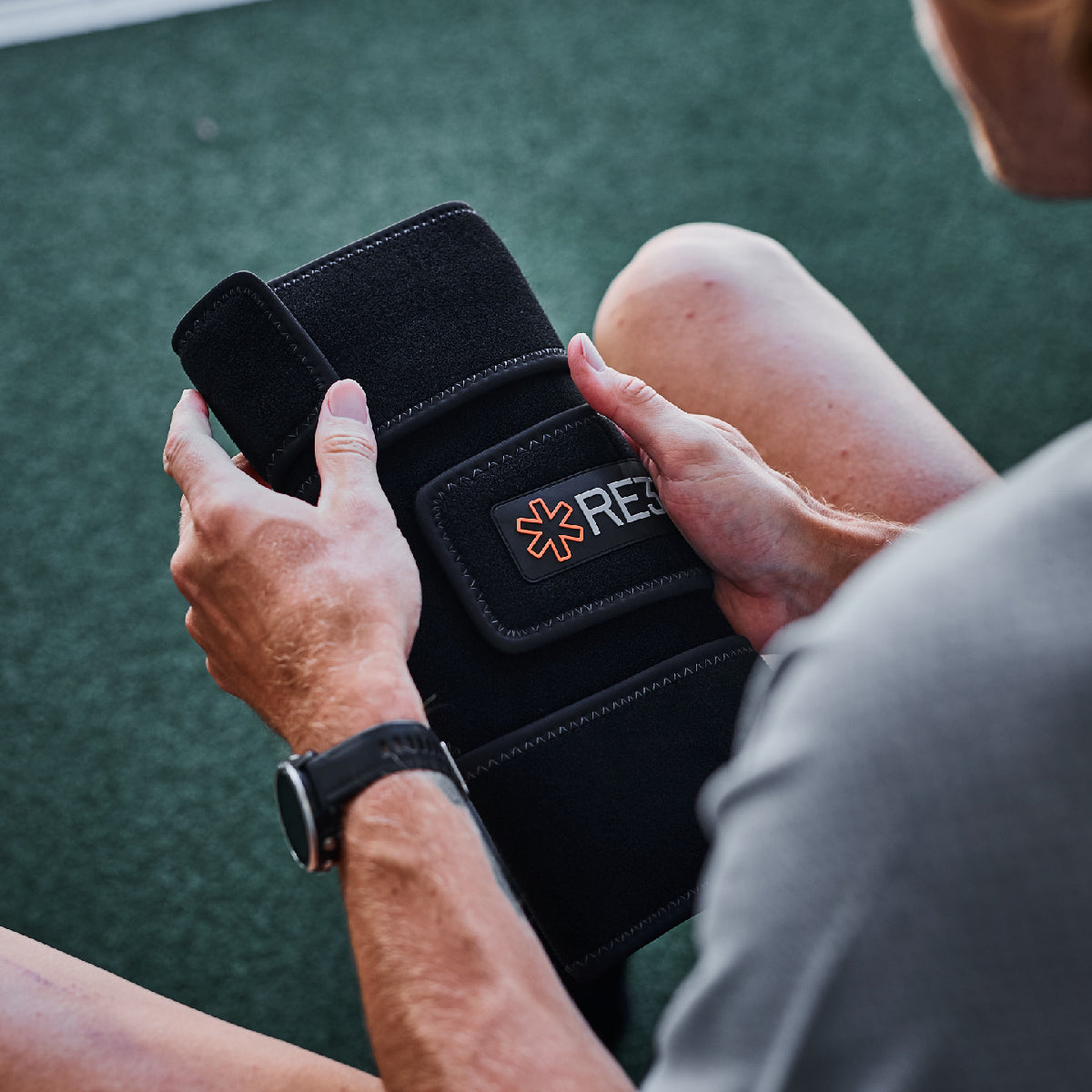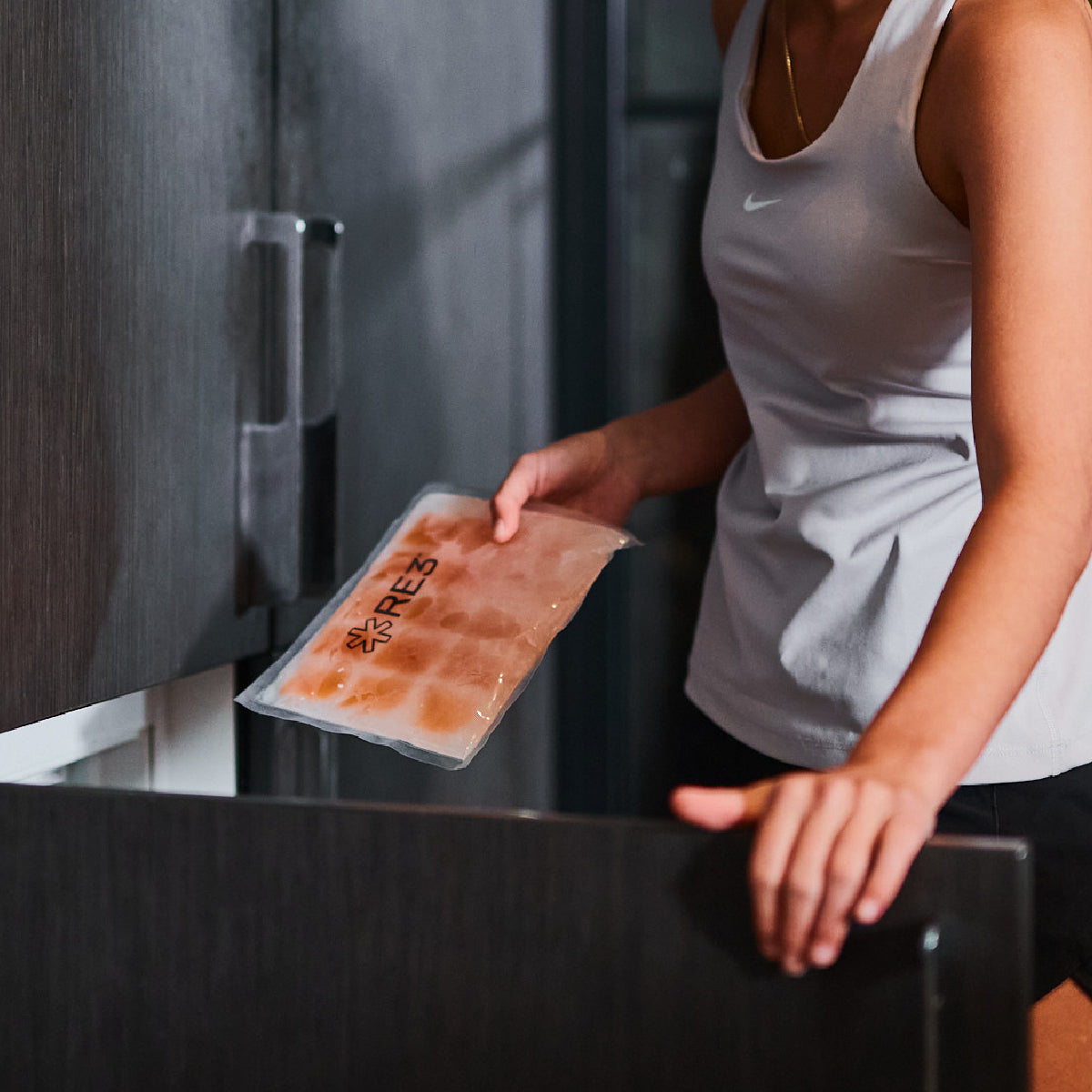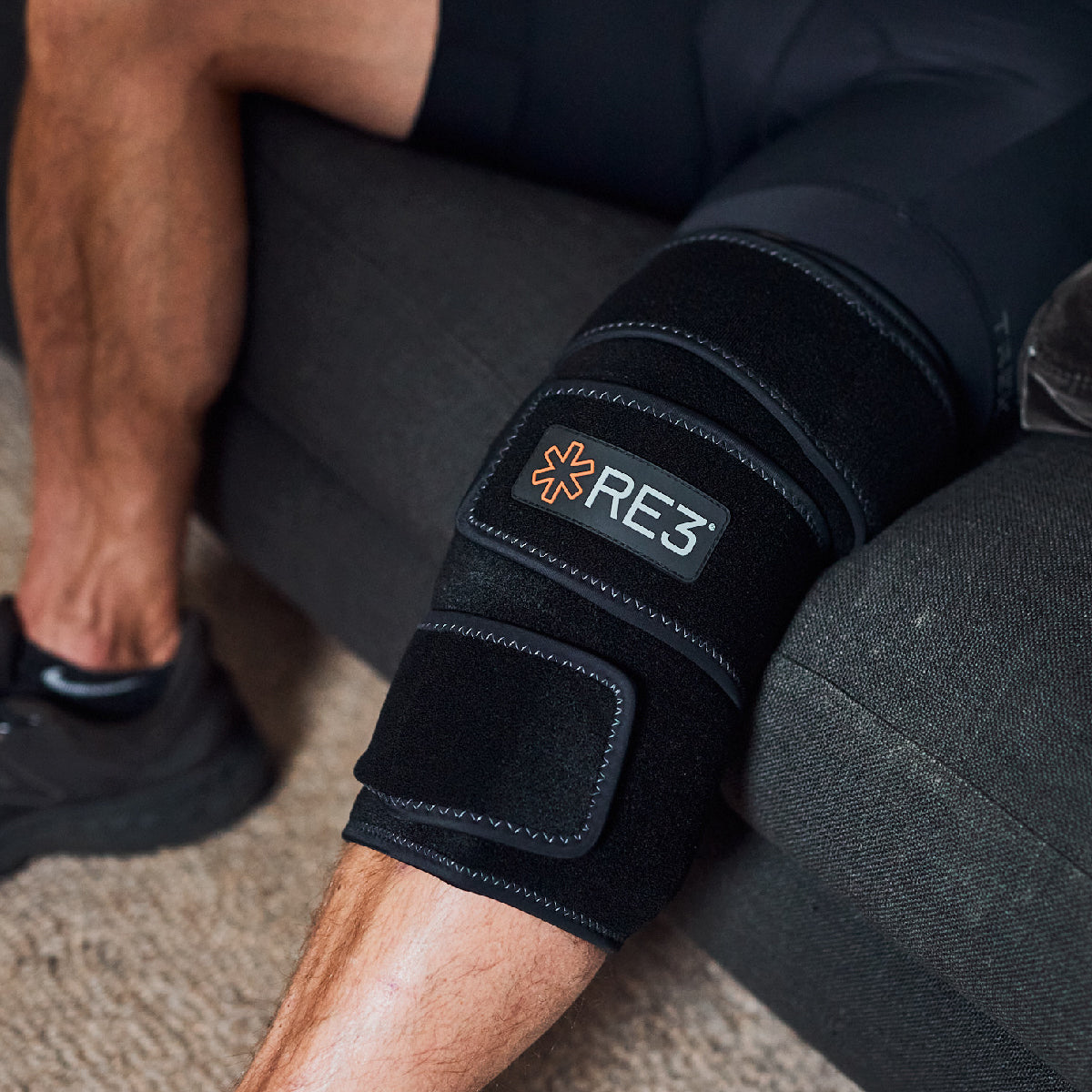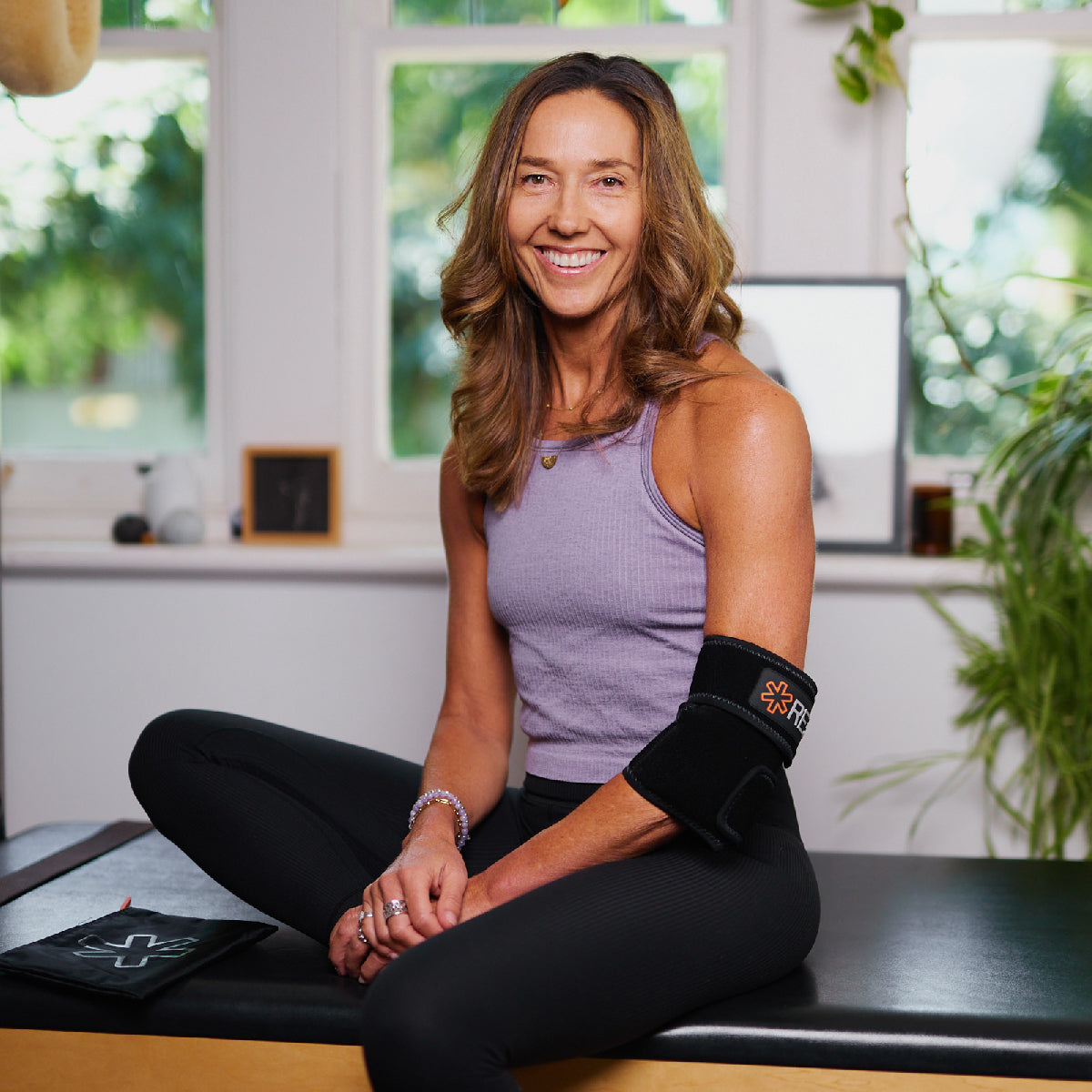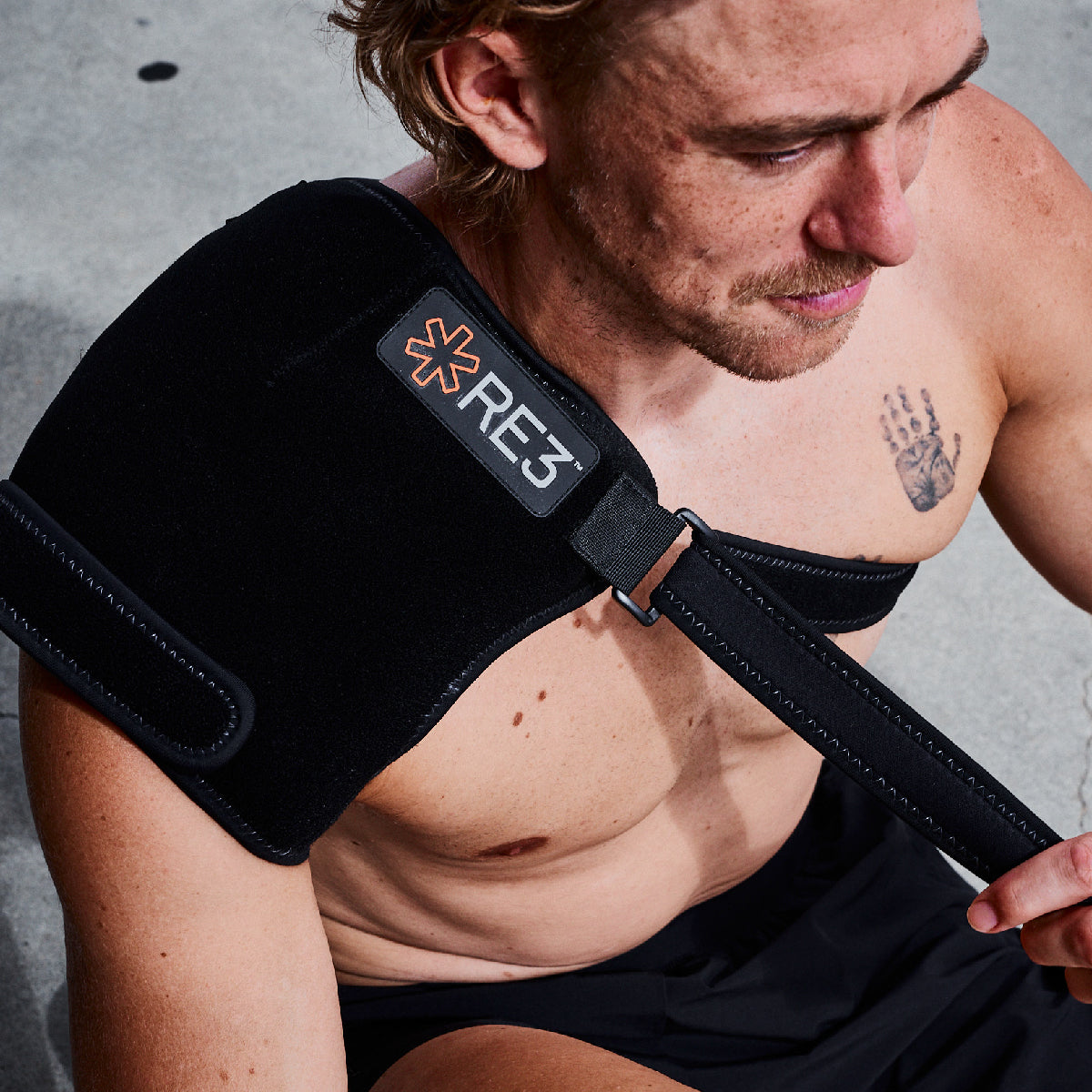For decades, the RICE method has been the general rule of thumb for treating sprains, strains and soft tissue injuries. The acronym translates to Rest, Ice, Compression and Elevation. But this advice, first suggested by Dr Gabe Mirkin, has been the subject of recent vigorous debate. In this article, we look at the different schools of thought and dive into the scientific evidence for each.
The RICE methodAmerican sports doctor Dr Gabe Mirkin first coined the RICE method in 1978 for the treatment of athletic injuries. Here’s a snapshot of the theory behind each principle:
| Method | What? | Why? |
| Rest |
Stop the activity and rest the injured joint |
After an injury, it’s important to give the body time to heal. If you push your body too quickly after being injured, you might slow the recovery process. |
| Ice |
Apply an ice pack for 15 minutes every two hours |
Cold therapy works by reducing blood flow to the injury. This helps reduce inflammation, swelling and pain. |
| Compression |
Firmly apply a compression bandage |
Compression reduces swelling by preventing blood and other fluid from accumulating around the injury site. |
| Elevation |
Elevate the injury, above heart height if possible |
Elevating your injured limb above your heart aids the recovery process by decreasing blood flow to the area. |
Is it time to put RICE on ice? Dr Mirkin’s latest advice
In 2015, Dr Mirkin walked back some of his advice, saying that ice and complete rest may slow the healing process. When you damage tissue through trauma, your body automatically sends inflammatory cells to promote healing.
While ice reduces swelling, Dr Mirkin suggests it also limits the arrival of these immune cells. In fact, he says that anything that reduces inflammation – like ibuprofen – delays healing. If you don’t allow this initial inflammation to occur, injuries may not heal as fast as they could.
As a result, he suggests limiting ice and rest. If you’re injured, you should stop exercising immediately and elevate the injury site. Compression bandages are also useful if you’ve injured a muscle or other soft tissue.
The verdict: He doesn’t completely reject the original RICE protocol, but instead suggests modifications to it. In other words, it’s ok to use ice for pain relief, but only for short periods and ideally within six hours of the injury occurring. Rather than rest for too long, it’s best to get back to your sport as soon as you can do so pain-free.
Cold therapy for soft tissue injuries
What do other experts make of Dr Mirkin’s latest advice? In short, you’re likely to get a slightly different answer based on their individual clinical experience and anecdotal evidence.
However, many reputable organisations in Australia continue to recommend RICE for soft tissue injuries. This advice sits alongside the recommendation to avoid HARM for 48 hours. This acronym simply means avoiding heat, alcohol, running (or other exercise of the injured area), and massage.
- Sports Medicine Australia adds an R to the acronym to create the RICER protocol – rest, ice, compression, elevation and referral. They suggest doing this for 48-72 hours to reduce bleeding and damage within the joint.
- Similarly, St John Ambulance Australia recommends RICE for sprains and strains.
- Better Health Channel, a division of the Victorian Department of Health and Human Services, suggests using ice packs immediately after an injury to reduce swelling. For an ankle sprain, they specifically recommend the steps involved in RICE.
- Safer Care Victoria recommends RICE to speed up recovery of sprains and strains, with a slight modification. They suggest ‘relative rest’ and say that early gentle movement of the affected joint may prevent stiffness.
Applying ice to reduce pain after a sprain or strain has another significant side effect – namely, the ability to start mobilising the area to aid recovery. Safer Care Victoria says you should start gentle exercises and stretching immediately to stave off joint stiffness.
The physios behind Clinical Edge agree, saying the main effect of ice is to decrease nerve conduction velocity, which reduces pain from surface tissues. This means you can perform exercises and mobilise the area sooner. A secondary effect of this? Reducing swelling.
And swelling can hinder the healing process, as Dr Peter Baquie explained to NewsGP. He noted a marked difference in ankles six, eight or 10 weeks after injury when RICE hadn’t been used. He said ankles were ‘stiff, swollen and sore. The inflammatory phase can be counterproductive, as the healing is non-specific to joint lining and within the joint itself.’
The verdict for soft tissue injuries: While much has been made of Dr Mirkin’s more recent advice, the fact is that many reputable organisations and governing bodies continue to recommend RICE. You need look no further than a professional game of footy, cricket or netball, which has the nation’s best trainers and physios on hand. If a player is injured during a game, the first thing you’ll see is the trainers reaching for the ice pack.
It’s fair to say that scientific evidence isn’t clear cut, and different studies produce conflicting results. Medical News Today concluded that the RICE method is still the most commonly recommended treatment for soft tissue injuries, even though not all healthcare providers agree.
Should I use cold therapy after surgery?
If you’ve had surgery on a joint or ligament, it’s even more important to prevent swelling and encourage gentle movement. This applies to shoulder surgery, anterior cruciate ligament reconstruction and knee reconstructions, to name a few.
Your rehabilitation will be adversely impacted if you’re in pain and discomfort, with swelling around the surgery site. Many orthopaedic surgeons recommend icing and compression to aid recovery and keep your rehabilitation program on track.
The verdict for post-surgical recovery: It’s best to speak to your orthopaedic surgeon for specific advice. But, in our experience, most surgeons will devise a rehabilitation program with specific exercises for around 12 weeks. They will probably suggest using a compression sleeve and regular icing while you have swelling. Orthosport Victoria says that for those recovering from an anterior cruciate ligament reconstruction, ‘it’s worth icing the knee after each exercise session for at least four months’.
To ice or not to ice: the verdict
It’s important to remember that Dr Mirkin’s new theory is just that. A theory, we look forward to more research being done in the area.
There’s no debate about the fact that ice will reduce swelling, pain and discomfort, and allow you to get back to gentle exercises sooner.
References
Better Health Channel (2014) ‘Ankle sprains’. https://www.betterhealth.vic.gov.au/health/conditionsandtreatments/ankle-sprains#bhc-content
Lewis E (2019) ‘Is it time to rethink RICE for soft-tissue injuries?’, NewsGP. https://www1.racgp.org.au/newsgp/clinical/is-it-time-to-rethink-rice-for-soft-tissue-injurie
Dresden, D (2018), ‘What is the RICE method for injuries?’, Medical News Today. https://www.medicalnewstoday.com/articles/321469
Mirkin, G (2015), ‘Why ice delays recovery’. https://www.drmirkin.com/fitness/why-ice-delays-recovery.html
Orthosport Victoria (2021) ‘Rehabilitation following Anterior Cruciate Ligament Reconstruction’, Patient Information. https://osv.com.au/wp-content/uploads/2019/07/rehabilitation-following-anterior-cruciate-ligament-reconstruction.pdf
Safer Care Victoria (2019) ‘Soft tissue injuries (sprains and strains)’, Soft tissue injuries patient fact sheet, Victorian Agency for Health Information. https://www.bettersafercare.vic.gov.au/sites/default/files/2019-07/Soft%20tissue%20injuries.pdf
https://www.betterhealth.vic.gov.au/health/conditionsandtreatments/ankle-sprains#bhc-content
Sports Medicine Australia (2021) ‘Soft tissue injuries’, Injury fact sheets. https://sma.org.au/resources-advice/injury-fact-sheets/soft-tissue-injuries/
St John (2021) ‘First aid fact sheet: Sprain and strain’. https://stjohn.org.au/assets/uploads/fact%20sheets/english/Fact%20sheets_sprain%20and%20strain.pdf
The Clinical Edge Team (2016) ‘5 minute physio tip – crushing the myths of ice application. Is ice useful for acute injuries and does it reduce swelling?’, Clinical Edge blog. https://www.clinicaledge.co/blog/5-minute-physio-tip-crushing-the-myths-of-ice-application-is-ice-useful-for-acute-injuries-and-does-it-reduce-swelling?utm_source=active+campaign&utm_medium=newsletter&utm_campaign=5mintip
